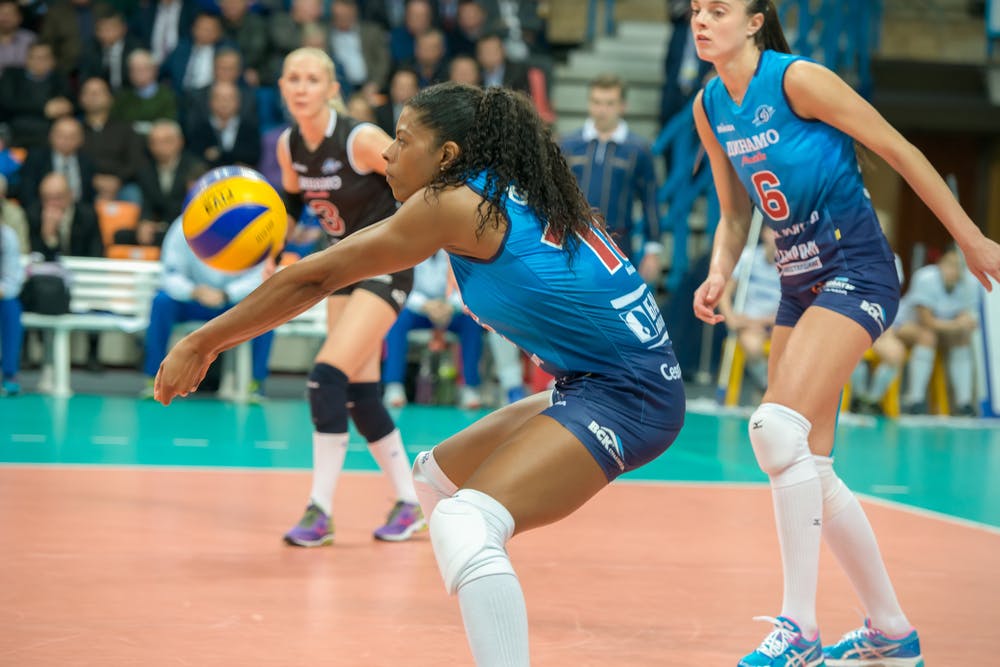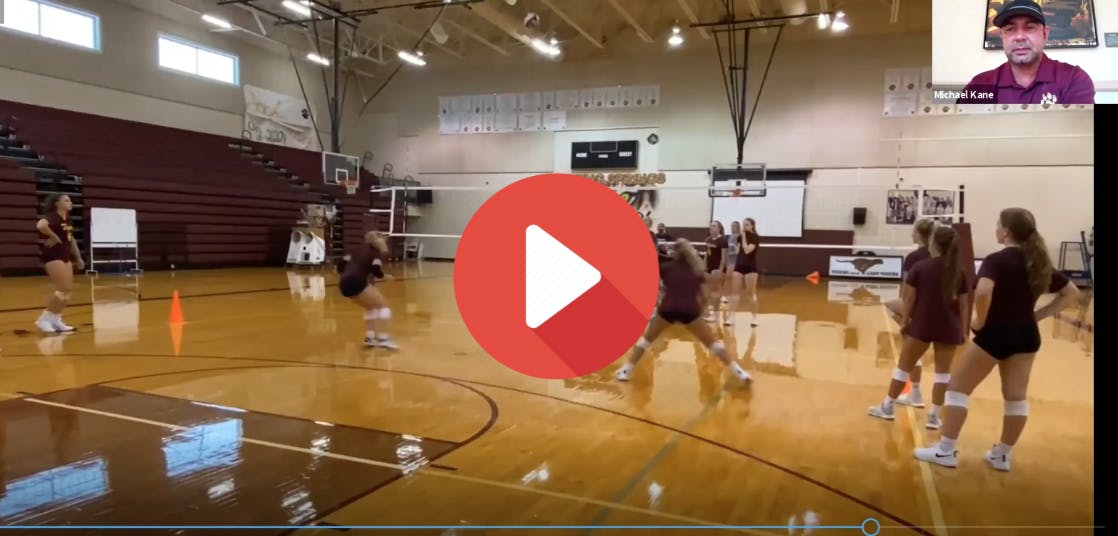Featured courses
- Volleyball Passing Drills to Win More Matches by Jackson Chlebowy
- Volleyball Serving Made Simple: Drills for Coaches and Athletes by Jackson Chlebowy
- Mastering the 5-1 Rotation in Volleyball: A Comprehensive Guide by Grant Young
- Master the Perfect Volleyball Approach – Jump Higher & Hit Harder by Sam DeJoseph
- Dominate the Net – 5 Must-Try Drills for Pin Hitters by Sam DeJoseph
- Three Small Group Training Drills to Improve Your Volleyball Team by Grant Young
- How to Teach Serving Volleyballs by Grant Young
- How to Make Your Volleyball Practices More Game-Like by Grant Young
- Three Volleyball Drills to Round Out Your Team’s Skills by Grant Young
- JUMP Serve into a Win by Eric Mahnke

Three Volleyball Drills to Round Out Your Team’s Skills
- By Grant Young
There isn’t enough time in the day for volleyball coaches to perfect every aspect of every one of their players’ respective games.
Each player needs something different in order to improve their specific skillset, and every team will be comprised of different players that will require different coaching methods and techniques.
And even if a coach has the exact same roster of players for two consecutive seasons (which is all but impossible), those players are going to be different from who they were one season ago, and will therefore also require different coaching.
While this can seem daunting, the reality is that no coach (or player or team) is going to be perfect, and there will always be more for teams to work on. This is why having a few fundamental volleyball drills that are proven to improve and help round out a team’s skillset is all a coach needs to rely on.
And there are few coaches better to rely on than Michael Kane.
Coach Kane has been the Dripping Springs High School women’s volleyball head coach for over 26 years. During this time, he has acquired many accolades; most recently winning the 6A state championship (being just the first season Dripping Springs competed in the higher division), which takes his total state titles to six. Coach Kane also holds the title of the winningest coach in DSHS history. With more than 800 high school career wins, this makes Kane one of the winningest coaches in Texas volleyball history.
Setting Coach Kane apart is the culture he creates with the student-athletes. They feed off Kane’s investment and love of the game; which is proven by the Dripping Springs volleyball program averaging 35% of its players going on to play at the collegiate level.
While Coach Kane surely has access to elite athletes, the way he runs his practices — specifically, the drills he decides to utilize on a daily, weekly, and yearly basis — has contributed to this staggering success.
This is why his ‘Volleyball Skills and Drills’ course is vital for any volleyball coach who wants to extract the most success out of their players as possible.
Pass to Yourself, Jumpset to Your Partner
One simple warm-up drill that Coach Kane swears by is what he calls the ‘Pass to Yourself, Jumpset to Your Partner’ drill.
This drill begins with players getting into groups of two and three. Once they’re in their groups, the player who has the ball will toss it into the air and jumpset it to their partner. The partner receiving the ball will then pass it to themselves by jumping it into the air above them then jumpset it back to the person who started with the ball.
If there are two people in the group, it can continue this way for some time. And if there are three players in a group, each time a person jumpsuits they will walk to the other side of the line so they’re available when the turn comes back around to them.
When having players do this drill, Coach Kane suggests adding variations after a few rounds in order to make it more difficult and get players more experience. For example, a coach can instruct their players to face backwards and have to react to the ball as it’s coming at them, or have them face both the left and right side so that they have to execute passes with a left and right shoulder drop.
As a coach, be sure your players are hitting the ball in the correct position with the proper footwork. While this drill is simple enough, players need to essentially be able to jumpset and pass to perfection if they’re to ascend to the college level.
Dig 10 in Transition
Another great partner drill that Coach Kane swears by is what he calls the ‘Dig 10 in Transition’ drill.
Just like the last one, the Dig 10 in Transition drill begins with two partners. The partner with the ball will start by tossing the ball nice and high before slapping it down around their partner’s knees or ankles. From there, the partner will dig it back to their initial partner, who will catch the ball.
The goal here is for the partner to dig the ball from different points and angles so that they’re comfortable doing so in the game.
The drill’s Transition aspect comes with the player who’s doing the digging beginning the drill by backpedaling, which is their way of simulating getting into position. Because executing a dig in transition is more difficult than doing so while standing stationary, this prepares players to execute their dig when it matters most.
Double Dig Lateral Movement

A third drill that Coach Kane highly recommends is what he calls the Double Dig Lateral Movement drill.
This drill is about getting players to shuffle their feet and having their hands at the ready. It will start with two lines on either side of the court, facing the net. The coach will then be tossing balls to the middle constantly, which causes one player to shuffle in, dig, pass, and then shuffle to the baseline while the person in the other line shuffles in.
After a player does this two or three times, they go to the back of the line so the person behind them can get their reps.
This drill helps coach players to keep their hands out in front of them at all times, which is going to benefit them in all aspects of the game, and at every level. And if players can get comfortable moving four to five feet laterally while executing a dig, that could make the difference between winning and losing.


